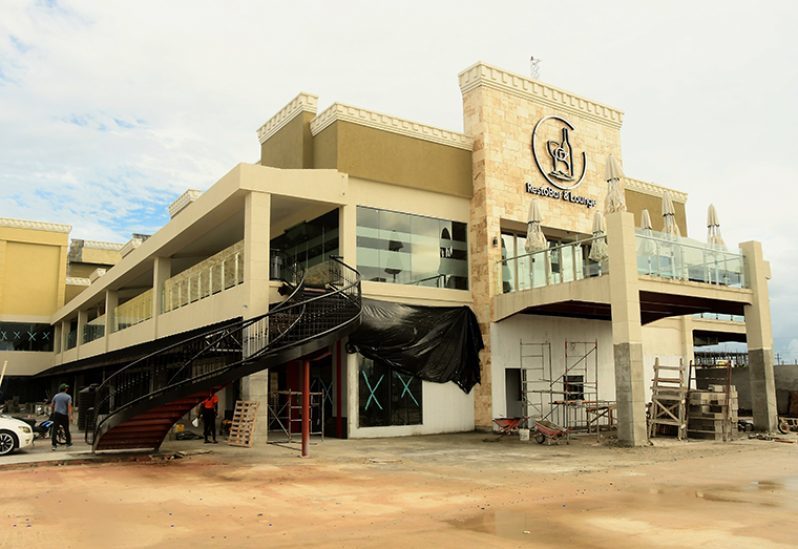– as Latin America, Caribbean countries not expected to return to pre-pandemic growth until 2023
By Vishani Ragobeer
IT will be a long and winding road to recovery for Latin American & Caribbean (LAC) countries but the commodity-producing countries – Guyana, Suriname and Trinidad and Tobago – are expected to ‘bounce back’ better with significant growth expected in Guyana.
According to recent reports from the International Monetary Fund (IMF), there will be uneven growth in the real Gross Domestic Product (GDP) across the LAC region. The economies of Guyana, Suriname and Trinidad and Tobago — the commodity exporters in the Region — are projected to grow by 4.0 per cent, however.
Guyana, according to current IMF data, is projected to grow by 8.1 per cent this year. It is important to note that this builds upon the 26.2 per cent real GDP growth recorded in 2020; then, Guyana was the only country in the Caribbean to record positive growth. In January, the World Bank projected that Guyana’s economy would grow by 7.8 per cent in 2021. This figure was a 0.3 per cent reduction from the previous 2021 projection made by the bank in June 2020.
For context, the Real GDP is an inflation-adjusted measure that reflects the value of all goods and services produced by an economy (in this case, Guyana’s economy) in a given year. In simpler terms, the real GDP measures a country’s total economic output, adjusted for price changes.
The World Bank also said that Guyana’s Real GDP grew by 23.2 per cent in 2020. Last year, prior to the pandemic, Guyana was expected to grow by 86 per cent in 2020. Like the rest of the world, the pandemic had a devastating impact on the economy owing to the slowdown in productivity and the increased need to bolster social services. It was Guyana’s burgeoning oil-and-gas industry, and the associated increase in construction and service activities, that cushioned the impact of the pandemic on the country.
During the presentation of the 2021 National Budget, Senior Minister in the Office of the President with responsibility for Finance, Dr. Ashni Singh, noted that as per the government’s calculations, Guyana’s economy grew by 43.5 per cent. Dr. Singh, however, highlighted that the non-oil sector of the economy contracted by 7.3 per cent.
The fishing, mining, forestry, manufacturing, services and construction sectors were all impacted by the COVID-19 restrictions, resulting in reduced productivity. There were small increases recorded in the water supply and sewage sector as well as in the electricity sector. Meanwhile, the IMF noted that the tourism-dependent countries — including Antigua and Barbuda, Aruba, The Bahamas, Belize, Dominica, Grenada, Haiti, Jamaica, St. Kitts and Nevis, St. Lucia and St. Vincent and the Grenadines — are expected to grow by 2.4 per cent. The entire LAC Region is expected to grow by 4.1 per cent.
The growth in the tourism-dependent countries of the Caribbean was downgraded for the Caribbean, from 4 to 2.4 per cent, since resumption in vital travel and tourism activity has been much slower than anticipated.
“Full recovery is still a long way ahead, though. We forecast that the Region will go back to its pre-pandemic levels of output only in 2023, and GDP per capita in 2025, later than other parts of the world,” a blog published by the IMF earlier in February, noted.
Further, the blog noted, “The crisis had a disproportionately large impact on employment with losses concentrated among women, young, informal and less educated workers—with consequences for social indicators.”
In October 2020, also, according to the NASDAQ Stock Market, Guyana’s growth was projected to be 12 per cent in 2021, 49 per cent in 2022 and 28 per cent in 2023. The country’s GDP of about $6.8 billion is expected to more than double by 2025, reaching over $14 billion.
These projections may be subjected to downward revisions. In this vein, the IMF noted: “…this already uneven recovery has been threatened by the pandemic’s recent resurgence and the reintroduction of stricter containment measures in some countries, as well as spill overs from the slowdown in the global economy.”
Guyana is a middle-income developing country and its massive growth has been largely attributed to its burgeoning oil-and-gas sector. The country is, however, resource-rich, even without oil as it is covered by dense forests, and is home to fertile agricultural lands and abundant natural resources. Gold, bauxite, sugar, rice, timber, and shrimp are among its leading exports.



.jpg)










